Many sensor options as a part of the Ecosystem
HW group produces a monitoring ecosystem where sensors of all types are an essential part of the solution. We consider the wide variety of sensors as our advantage. HW group is able to satisfy almost any customer with a project of any size based on wired sensors.
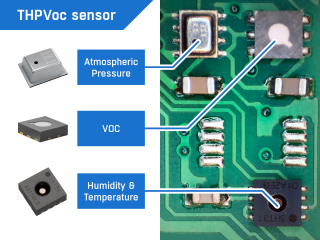
Let's take a look at some of the most popular sensor and detector options used by professionals for environmental monitoring.
- The sensors are connected to the RJ11 (1-Wire) or RJ45 (RS-485) port. The sensors provide a continuous value of, for example, -23.4°C or 32.7% RH. Device monitoring (SensDesk Portal) can monitor the safe range of values and send an email or SMS alert if the value changes outside the range. You can only use sensors from the HW group.
- Converters and Expanders allow you to connect other types of buses or interfaces to standard monitoring HW group devices. Converters use a continuous value (0-10V / 4-20 mA) as input.
- The Detectors you connect to a DI input (green connector) provide a value of 0/1. A typical example is a smoke detector with a relay output or a door opening detector (door open/closed). The monitoring device (SensDesk Portal) can monitor the switching to the alarm value and send an e-mail or SMS alarm. Detector in this definition is a global product. You can connect detectors with relay output from any manufacturer to the DI input of any HW group' device.
60m for RJ11 (1-Wire) / 1000m for RS-485
When talking about sensors, there are two widespread options available from HWgroup, with a significant difference: RJ11 (1-Wire), which allows a maximum distance of 60 meters per RJ11 port between the sensor and the device. The RS-485 standard, which allows a maximum distance of 1000 meters.
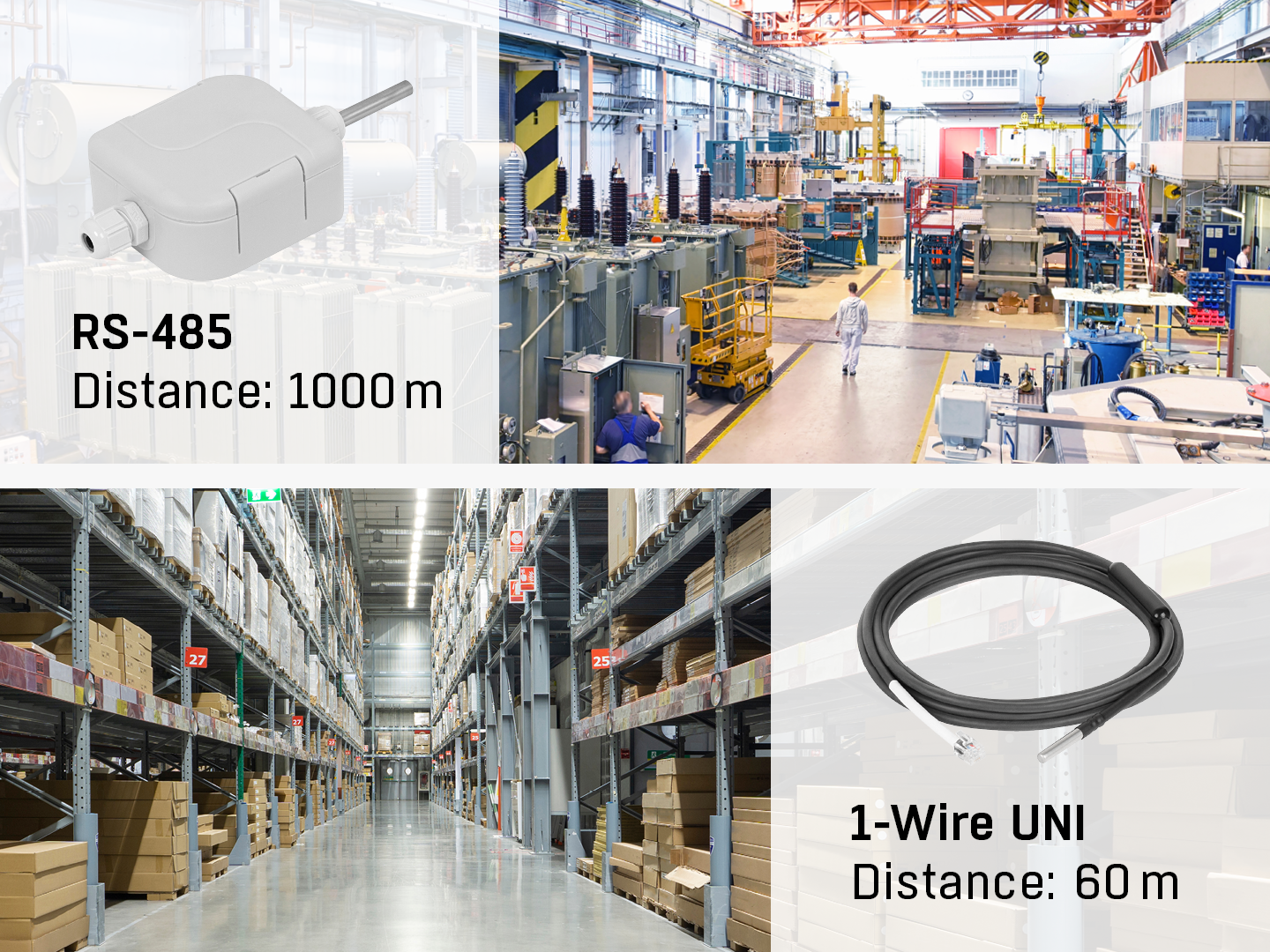
This particular difference between these two types of standards makes RS-485 a perfect candidate for industrial-scale monitoring projects, while the fully auto-detecting RJ11 option is better suited for smaller projects such as data centers or warehouses.
Temperature for Cryo / Fridges
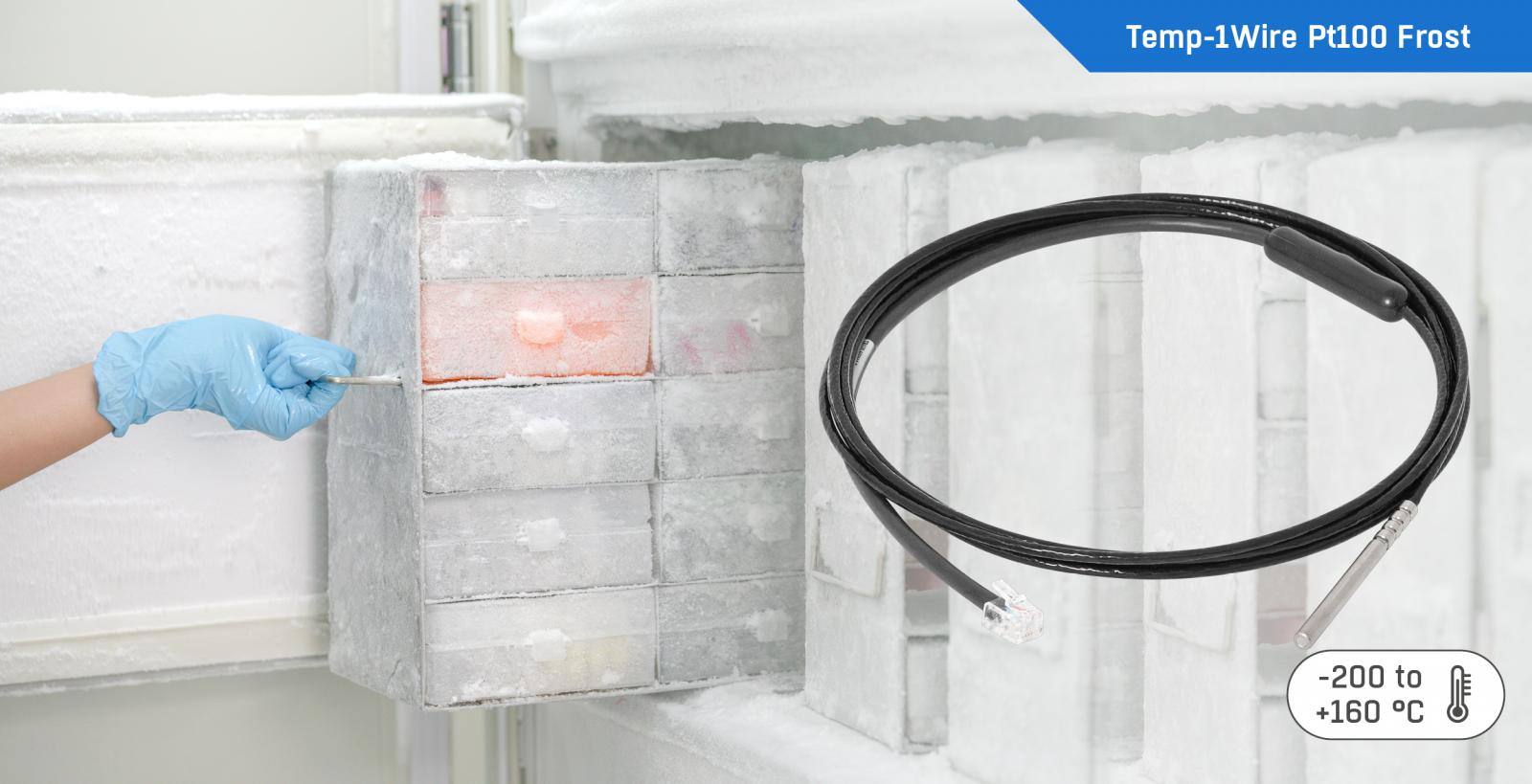
Temperature sensors, based on 1-Wire or RS-485, are needed in many niches where it is necessary to monitor precise environmental conditions: cryo storage for pharmaceutical use, refrigerator temperature in shops and warehouses, and many, many more potential applications.
HW group offers special temperature sensors for any application where there are strict requirements for the monitored environment. That's why we produce a RJ11 (1-Wire) based PT100 Frost temperature sensor, specially designed for those situations where an accurate value in the range of -200°C to +160°C needs to be monitored.
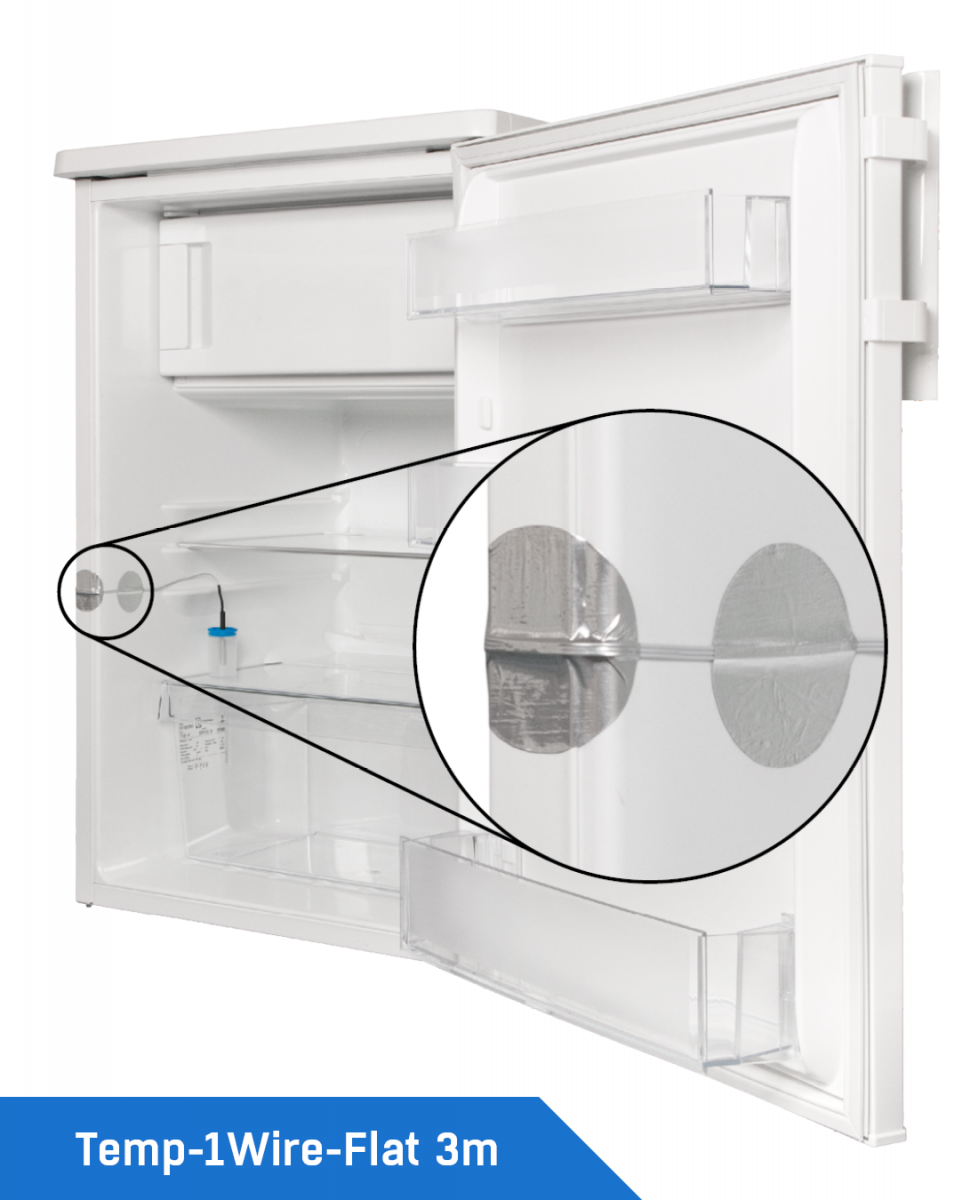
Temperature sensor with flat cable for easy installation
The Temp-1Wire-Flat is a unique temperature sensor designed for use in refrigerators. Special flat cable allows it to be bent around a refrigerator and fixed in the doors. There is no need to drill the refrigerator housing and the installation is quite easy and quick. Cable is designed for 1000 cycles of opening and closing of refrigerator doors.
Outdoor / Indoor Temperature & Humidity combined sensors
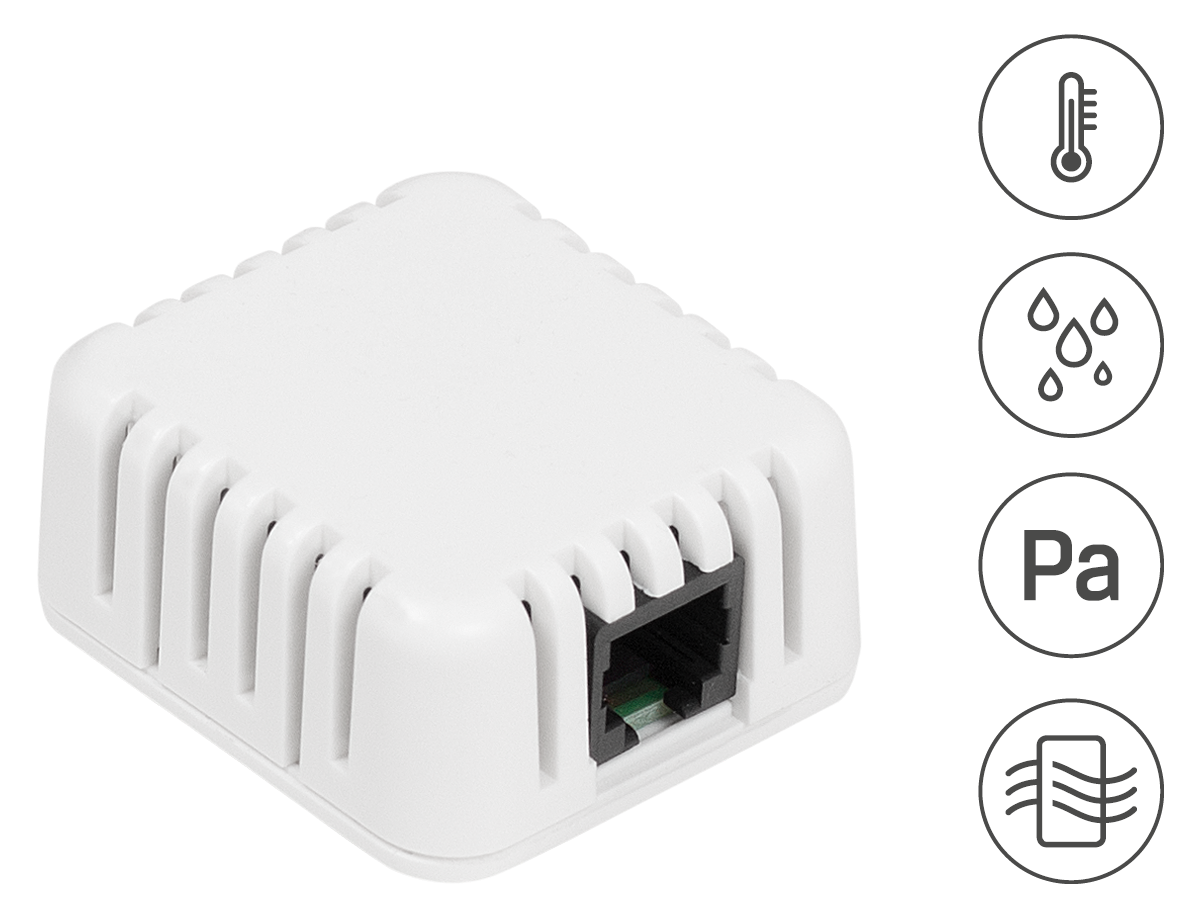
In addition, HW group produces a wide variety of outdoor and indoor combined sensors, where the customer can have up to 4 sensor values in one package - as is the case with our THPVoC sensor, which provides 4 monitored values in one slick package: Temperature, Relative Humidity, Barometric Pressure and VOC (Volatile Organic Compounds). This is the best possible combination when you need a small but versatile indoor sensor package.
Outdoor relative humidity sensor
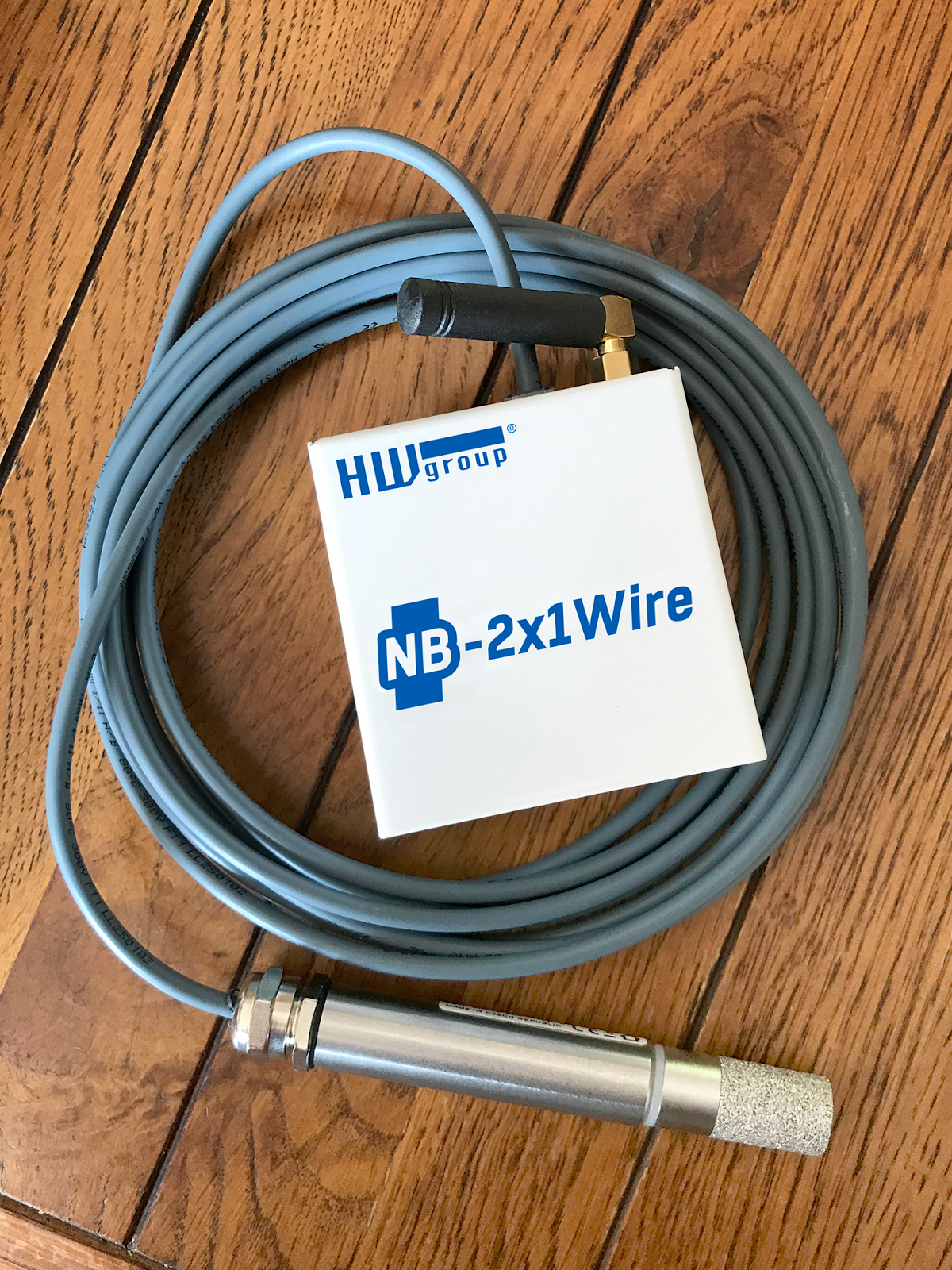
With our outdoor sensors, such as the HTemp-1-Wire Outdoor Sensor, you can measure both temperature and relative humidity at the same time without worrying about outdoor conditions. This sensor works in the temperature range of -30 to 85°C, which allows it to be used outdoors. In addition, this particular outdoor sensor is useful if you need to calculate the dew point - a value that is very important in some applications, such as vineyard monitoring.
Converters (60V / 0-20mA / 4-20mA)
Converters allow users to connect analog type of probes (sensors) to standard monitoring HW group devices.
HW group manufactures three different types of converters for use with our devices. The values can be exchanged via LAN or GSM. When the current is out of a specified range, an email or SMS is sent. Can be connected to remote monitoring systems based on SNMP or Modbus/TCP.
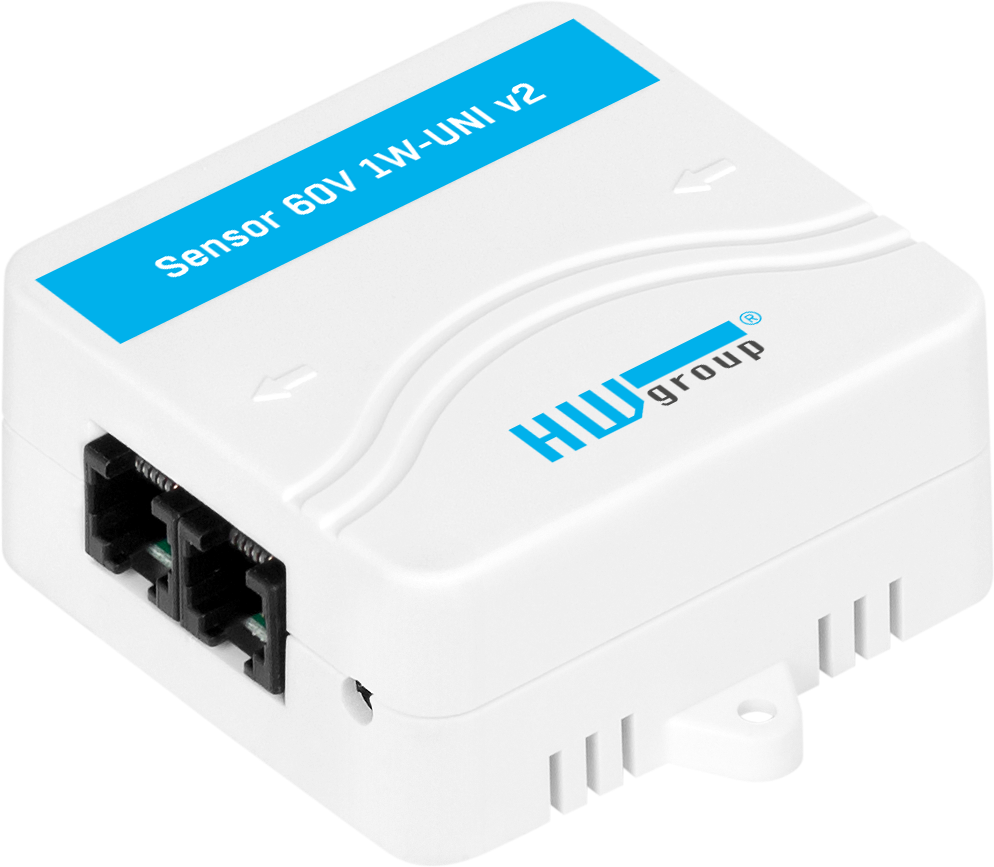
Galvanically isolated voltage sensor up to 60VDC with 1Wire-UNI output. Typical applications include measuring the voltage of industrial sensors (0-10V) or battery voltage. Often used to measure 48V power supplies in telecommunications (48V standard).
High accuracy allows use for 0-10V applications, sensors can be daisy chained using two RJ11 connectors. This converter is powered from the 1Wire-UNI bus or an external power supply.
Isolated DC current sensor for 1Wire-UNI bus. Sensor for measuring currents in the 0-20mA range. It is typically used to connect an industrial probe with 0/4 to 20mA output - with a discrete power supply (e.g. to measure fuel level in a tank).
Sensors can be daisy-chained using two RJ11 connectors. The converter is bus powered via 1Wire-UNI interface, which means that a maximum of 2 sensors are allowed per active port.
Isolated DC current sensor for the RJ11 1W-UNI bus. It's a RJ11 powered converter for external 4-20mA probes. It is typically used to connect an industrial probe with 4-20mA interface - 2wire current loop ("sink" type).
It can be daisy chained using two RJ11 connectors. An external 12-30V power supply is recommended with this converter.
Sensor wiring - Daisy chain Box2 / Rack19" sensors
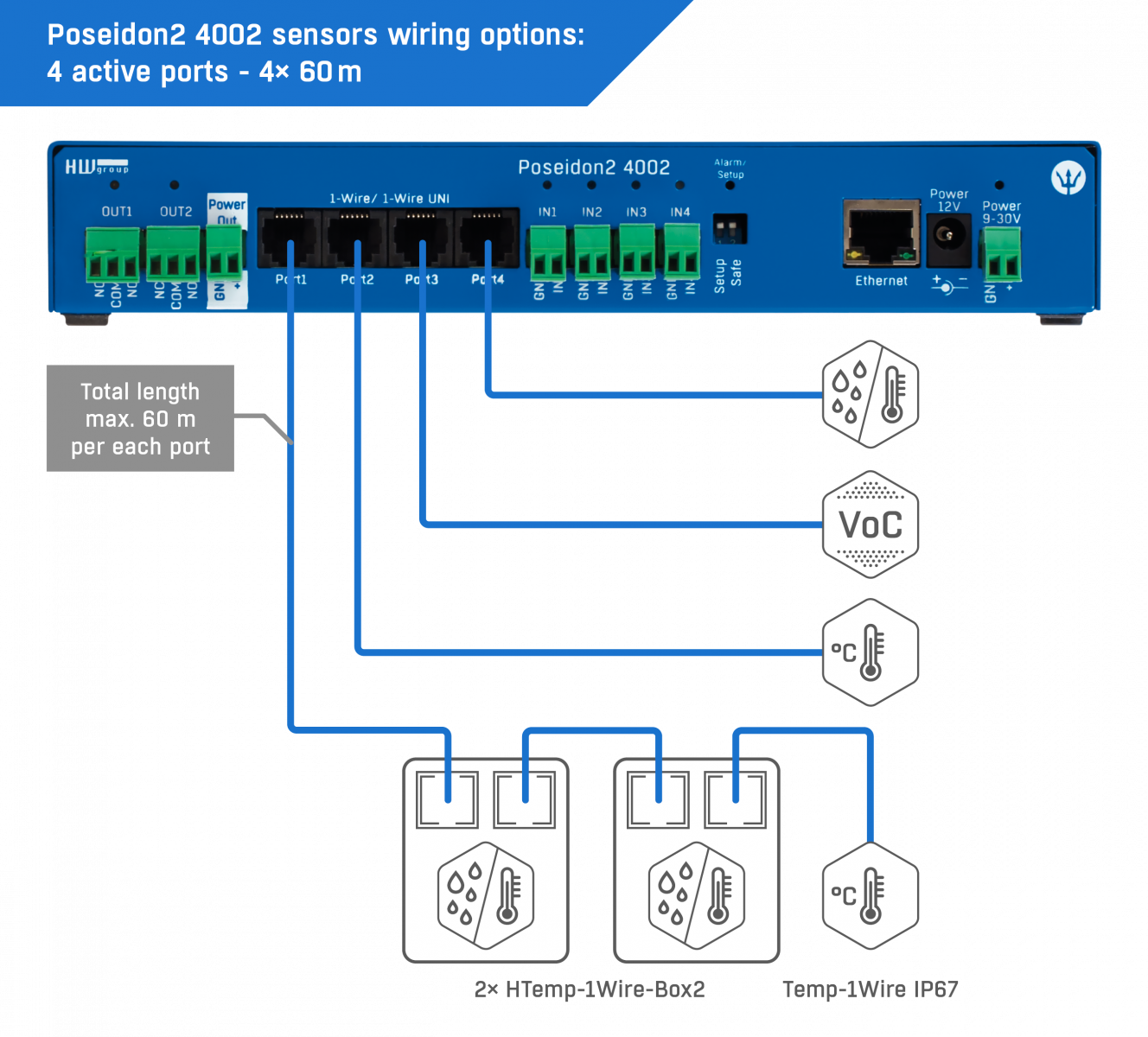
HW group offers the technical possibility to daisy-chain the sensors for longer or more complex installations. Our Box2 and Rack19" sensors can be daisy-chained with a total length of 60 meters from the first connected RJ11 port. This is the reason why, for example, Poseidon2 4002, while having 6 RJ11 ports (up to 16 sensor values), can be daisy-chained.
Sensors calibration features
The USB calibrator helps you to adjust measured values for most of sensors.
If you want to connect a third party (analog) sensor to HWgroup's device via RJ11, you would need the USB calibrator. For example, a radar distance sensor with 4-20mA analog output. Using the USB calibrator, you can define 4mA = 1m distance and 18mA = 5m distance. The whole ecosystem of the HW group will later display the distance in meters and would no more use the mA values.
The conversion doesn't have to be linear, there is a matrix for 8 values.
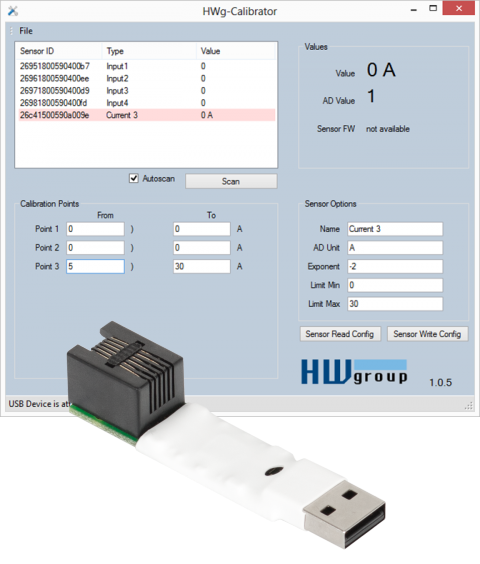
Summary
HW group manufactures a wide range of wired sensors for every possible application. And with the help of the USB calibrator and converter, it is possible to connect almost any other third-party sensor to the HW group monitor. And with daisy-chaining, a large number of sensors can be installed in a project of any size or market specificity.












